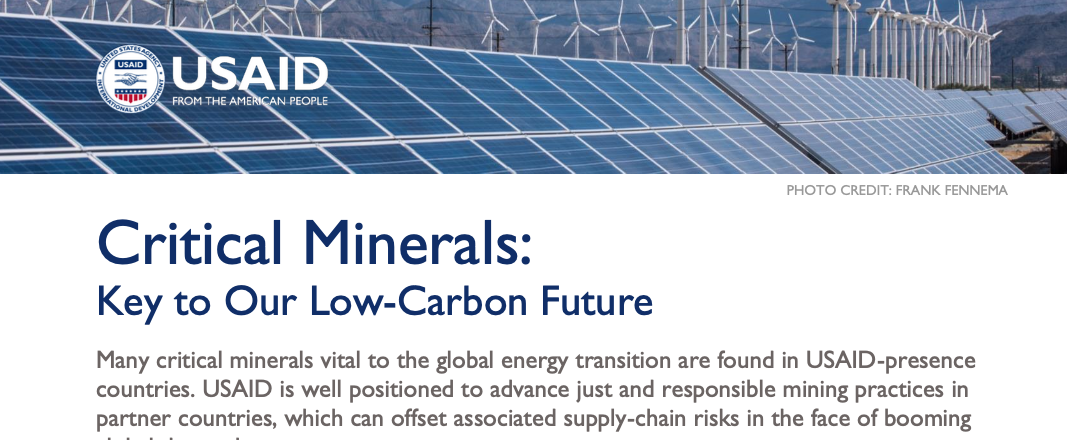Many critical minerals vital to the global energy transition are found in USAID-presence countries. USAID is well positioned to advance just and responsible mining practices in partner countries, which can offset associated supply-chain risks in the face of booming global demand.
To create a low-carbon economy that will reduce the threat of climate change, the world must shift from a fossil fuel-based economy towards renewable energy technologies such as solar panels, wind turbines, and electric vehicles. These technologies rely on several dozen minerals, including cobalt, nickel, lithium, and rare earth elements. Global demand for these key minerals is projected to increase by as much as 400 percent by 2040 compared to today’s levels (see figure below). These minerals are mined in more than 70 countries, including many where USAID operates.
USAID has more than 20 years of experience supporting responsible supply chains for diamonds, gold, and other conflict minerals. More broadly, it has deep expertise promoting transparent resource governance, protecting the environment, preventing conflict, improving benefit sharing, and other development goals that intersect with mining. The Agency is well-positioned to build on this work in the context of today’s increasing global demands for minerals, simultaneously working to support our climate mitigation goals, contribute to economic development, and avoid a new “resource curse.”
To this end, USAID’s Land and Resource Governance (LRG) Division supports Missions to promote more responsible mining. The LRG Division provides technical analysis of mining issues specific to each country, support with private sector and civil society engagement, facilitation for integrating mining considerations into other programs, and other services. Through these efforts in collaboration with host countries and other stakeholders, USAID programs can influence the direction mining takes—mitigating negative impacts while helping to achieve development goals.


